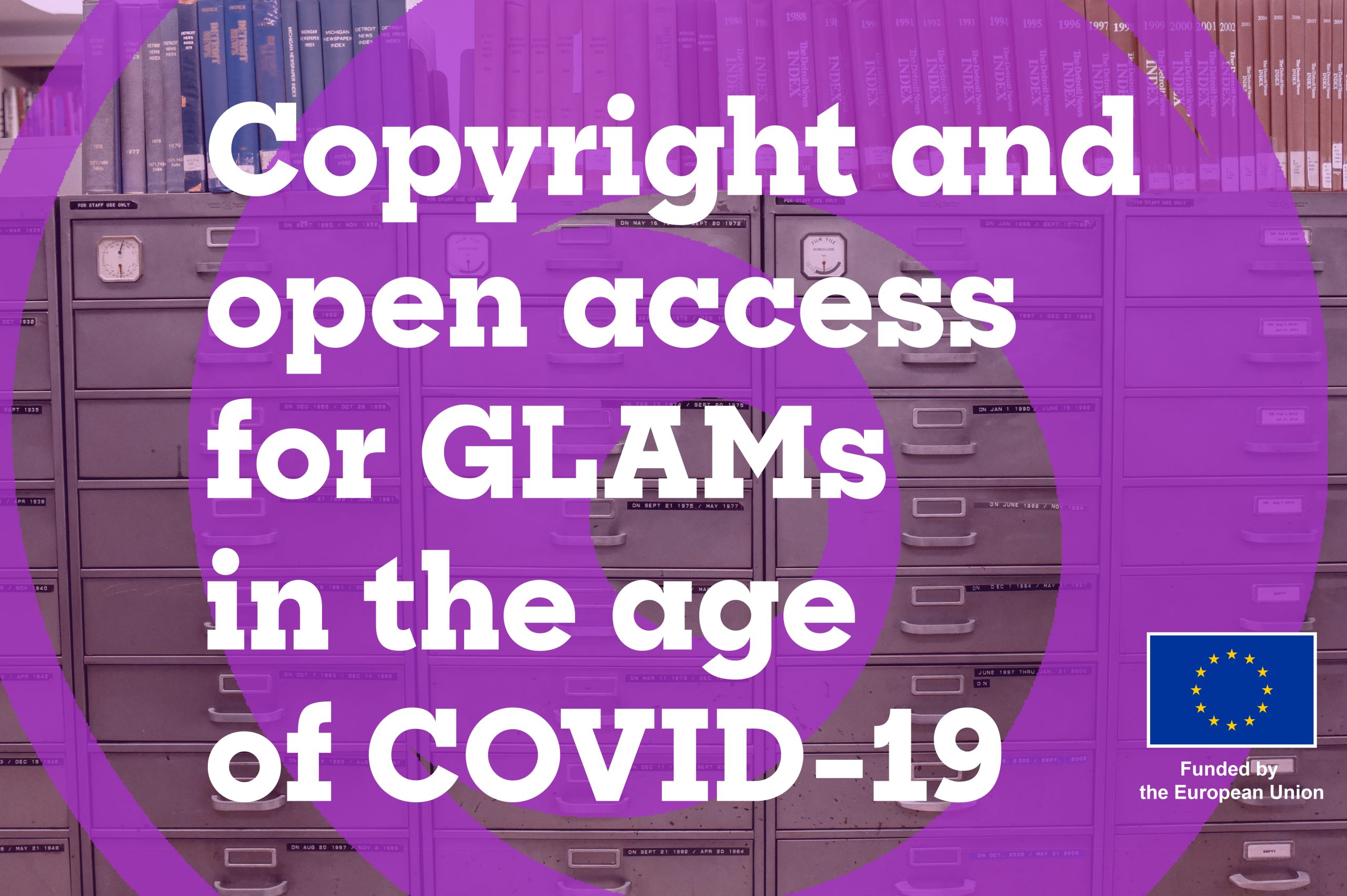
a working paper by Stelios Lekakis (Mazomos) and Mina Dragouni (Panteion):
Well before the COVID-19 pandemic, a plethora of memory institutions across Europe had been devoted to opening their collections and resources to audiences by harnessing digital platforms and tools, digitising their artefacts, books, archives, and other objects of cultural, scientific, and historical significance. From early 2020 onwards, the outburst of the pandemic crisis stressed further the necessity to make cultural heritage open and digitally accessible. In this document, we map available copyright and open access options for cultural organisations, assess distribution policies and reveal data-sharing trends in the post-pandemic era. Our overarching aim is to provide some insight into the current landscape, imminent needs, and future challenges of the European GLAM sector to inform future policy.
Our review begins by defining cultural data ‘openness’, exposing the ambiguity and at times, misuse of the term across GLAMs. Easy and free access, metadata processing, permissible uses, and purposes are identified as key criteria of open data policy. In turn, available legal instruments for releasing data are presented and explained, including the Public Domain Mark and the available options and rules of Creative Commons licenses.
Next, our analysis draws on the OpenGLAM survey (running since 2018 by McCarthy & Wallace) to map the sectoral landscape of sharing digital resources online. As it is observed, the level of digitisation and adoption of open access practices varies greatly among GLAMs located in Europe. Most organisations appear to have published ‘some eligible data’ as open data while they still apply non-open access policies for other resources and collections. This seems to indicate some hesitation towards an all-embracing open data policy at organisation level or broader barriers within and outside the sector. Regarding the release of digitised creative work that belongs to the Public Domain, most cultural organisations use the Public Domain Mark (34%), followed by the Creative Commons CC BY (25%) and CC BY-SA (21%) licences or national equivalents. Overall, we observe that more than half (52%) of GLAMs participating in the survey are Public Domain compliant; particularly libraries, whereas museums and archives appear comparatively more reluctant to waive all rights to their digitised assets. At the same time, it appears that only a relatively small percentage of collections and records held at European GLAMs have so far become available online as open-access digital resources. Quite critically, Europeana has a pre-eminent position as the primary distribution channel that European GLAMs employ to distribute their open-access materials.
This motivates us to explore further Europeana’s statistics for participation, volume of materials, and rights regimes. At the time of writing this document, Europeana recorded almost 57 million contributions by GLAMs, including images, 3D, texts, sound, and video records. These have been provided by a total of 3,532 institutions, including all core GLAM categories and several peripheral organisations, such as universities. The ‘champions’ in terms of data volumes were the Netherlands (about 16% of all Europeana materials) and Germany (a. 11% of all materials), followed by the UK, Spain, Sweden, and France. Regarding copyright and open access, we observe that a considerable amount of Europeana’s digital materials (a. 21%) have been released under a Public Domain Mark, whereas another 13% is also free of copyrights under a CC0 licence. However, almost half of GLAMs digital resources distributed through the Europeana platform are still not openly accessible.
Overall, although a culture of sharing free and unrestricted digital data as a ‘commons’ fits well with the broader societal mission of GLAMs and important steps have been made in terms of providing an open-access culture in the sector, more efforts (and resources/infrastructure) are required so that openness can become the standard good sectoral practice. Openness has not yet crystallised as the standard for sectoral practice across European GLAMs. There is still great variance across the sector regarding digital copyright and open access policy, not only amongst different sub-sectors (e.g. libraries as compared to museums and archives) but also within the same sector. It appears that greater consensus is needed to ensure no new rights are claimed in the digital versions of Public Domain works whereas digital resources are shared responsibly, both within, but also separate from, established institutions, allowing for a greater socially-embedded engagement with GLAMs work, digitised records, and objects.
Funded by the European Union. Views and opinions expressed are, however, those of the author(s) only and do not necessarily reflect those of the European Union or European Research Executive Agency (REA). Neither the European Union nor the European Research Executive Agency (REA) can be held responsible for them.